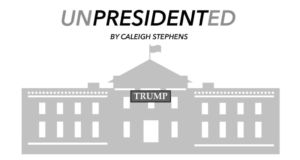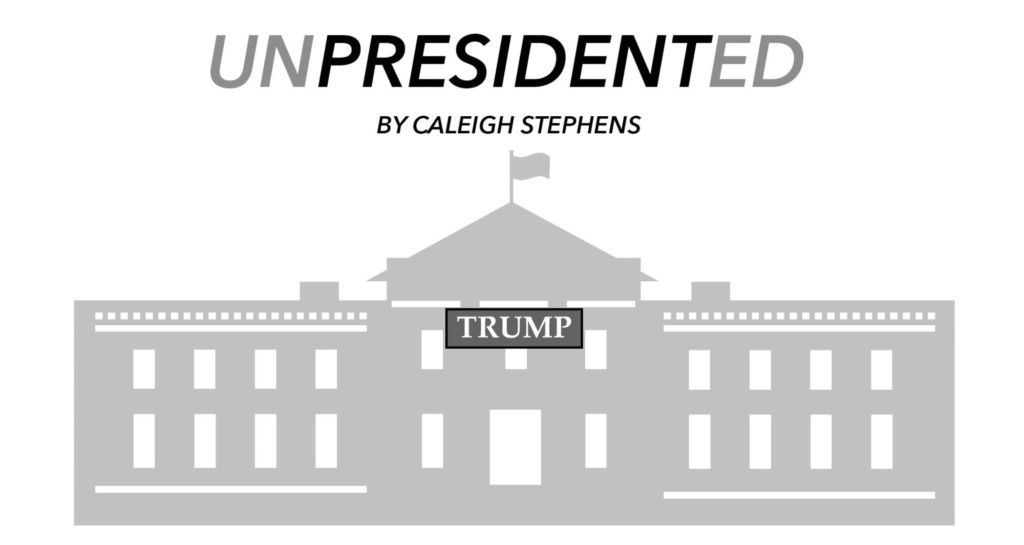
“UnPresidented” is a new column discussing the transition and first days of the Trump administration.
The inauguration and first weeks of President Trump’s administration have many looking toward the 2020 election cycle, not excluding Trump himself. On Saturday, less than a month after he was sworn into office, Trump returned to the campaign trail, holding a re-election rally in Florida that was, in Press Secretary Sean Spicer’s words, “run by the campaign.”
It only took a few hours for Trump to file for re-election with the Federal Election Commission, having declared his intent to run on Jan. 20. If it sounds unseasonably early for an incumbent president to restart his campaign, that’s because it is. Barack Obama filed his statement of candidacy in April of 2011. George W. Bush filed his in May of 2003. Bill Clinton did the same in April of 1995.
And Trump does so even without a challenger in sight. As of now, all considerations of possible Democratic nominees have been speculative, with some suggesting the likes of Michelle Obama and Joe Biden as possible candidates, both of whom have clearly stated they have no interest in running.
In the absence of a candidate to rail against, Trump has furthered Chief Strategist Steve Bannon’s claims that the media is the “opposition party.” Throughout his rally speech, Trump assailed the media with accusations of dishonesty, claiming news outlets “make [news stories] up in many cases” alongside audience chants of “CNN sucks!”
If that wasn’t enough, Trump also took the time to attack the judicial branch, complaining about the appeals judges who block his travel ban. Even without an opposing candidate, Trump did what he does best―create an enemy and exploit it. In short, Trump’s most recent rally easily falls alongside his speeches pre-election: full of false statistics, vague strategies and scathing complaints.
While he attended his rally, Trump left behind a White House in complete disarray. He had not yet announced a replacement for the sudden departure of former-National Security Adviser Michael Flynn. The GOP had just forced his labor secretary pick Andrew Puzder to withdraw, as high-up roles in the administration continue to remain unstaffed.
Amid controversy and critiques of his failed travel ban roll-out and attacks from Democrats and influential Republicans including Sen. John McCain and Rep. Justin Amash, Trump retreated to where he feels most comfortable―an environment in which he can create a spectacle and brag about himself to a stadium of adoring fans.
There’s a reason incumbent presidents don’t begin campaigning on the literal day one of their administration. There is much to do in the first months of a presidency, from transitioning staff to taking steps to implement major policy goals. Trump should be dealing with internal and external crises, not campaigning.
The rallies allow Trump to shift the focus off of his policies, to bask in the cheers of dedicated supporters rather than face his disastrous first attempts at the presidency.
The idea of the rise of a “permanent campaign,” first popularized in journalist and later Bill Clinton aide Sidney Blumenthal’s 1980 book of the same name, has certainly seemed to increase in recent years. The political science concept of elected officials relying on media exposure and focusing on approval ratings instead of legislation has been well-noted, especially among Clinton and all of his successors. A study by the nonpartisan Center for the Study of the Presidency and Congress found a sharp uptick in the number of presidential visits outside of Washington D.C. in the years since Jimmy Carter.
Increased attention to media and public perception with a focus on re-election instead of policy is nothing new. In February of 2009, Obama traveled to give speeches in support of his stimulus package and other policy elements. But while presidents in the past campaigned with their policies, Trump has taken a much more overt path. His decision to flat-out campaign before the end of his first month is wholly new, and terrifying.
Instead of taking any kind of political action that would be supported by the American populace, Trump has chosen to return to the arguably most successful part of his political career: the campaign. Trump’s return to the campaign comes on the heels, though he would never admit it, of tanking approval ratings and mounting criticisms. Since Jan. 25, according to Gallup Polls, the majority of Americans have disapproved of the job Trump has done so far. And just two days before the rally his approval rating fell to a low of 38 percent, matching the lowest point of Obama’s approval rating through two terms.
Frankly, the whole thing feels ridiculous and just a little desperate, and I am inclined to think Trump would have been wont to agree with me just a few months ago.
As Trump said in a speech in Ohio in October, “[Obama] campaigns. This guy ought to be in the White House working on jobs, working on our military, working on defeating ISIS.” Or as he said a few weeks before the election, “Wouldn’t you rather have [Barack and Michelle Obama] in the White House, like, working hard?”
To answer the rhetorical question of a hypocrite, yes, yes I would like to see a president actually in the White House, working hard to avoid disastrous missteps and filling a cabinet, not on the campaign trail for an election years away.







